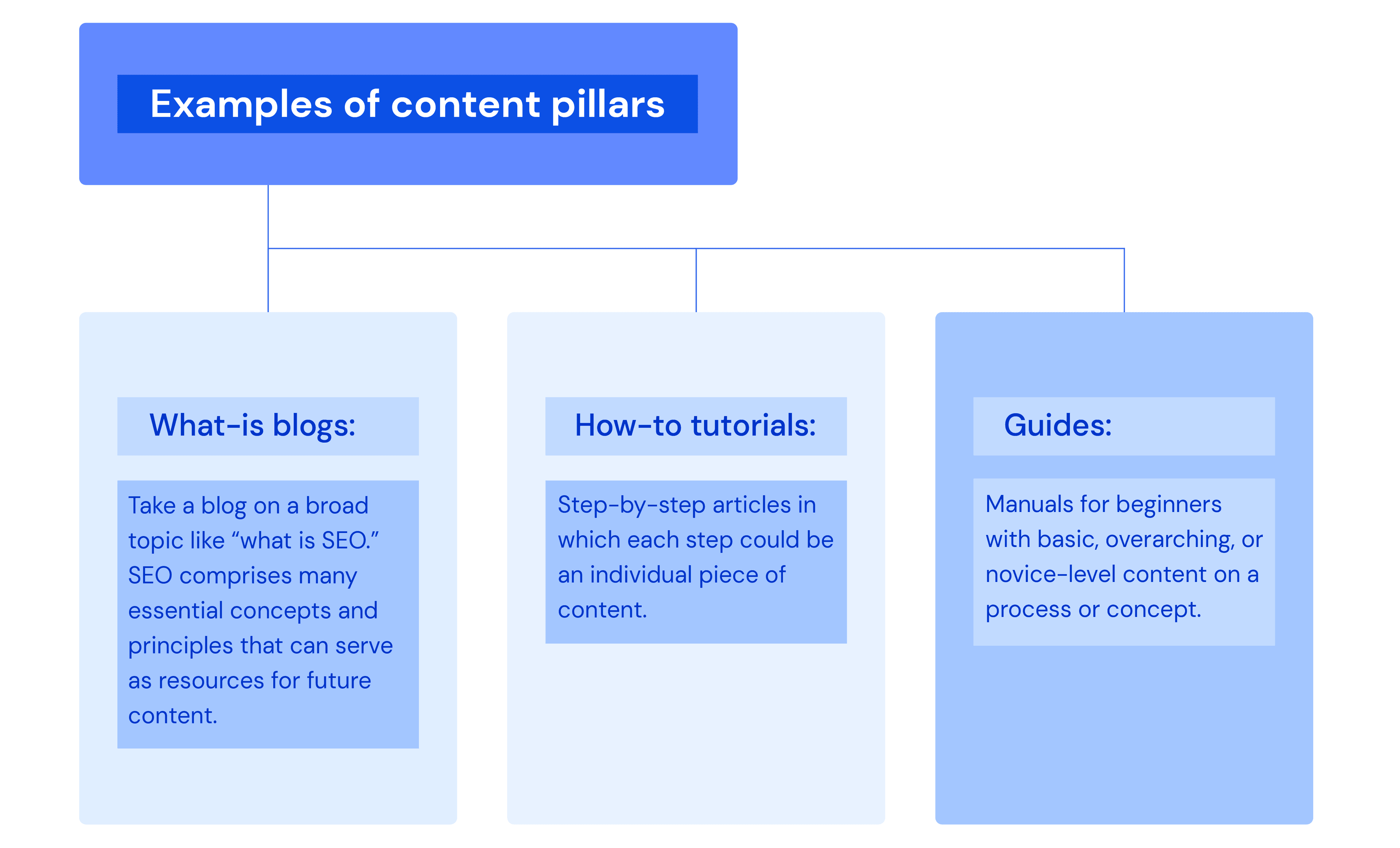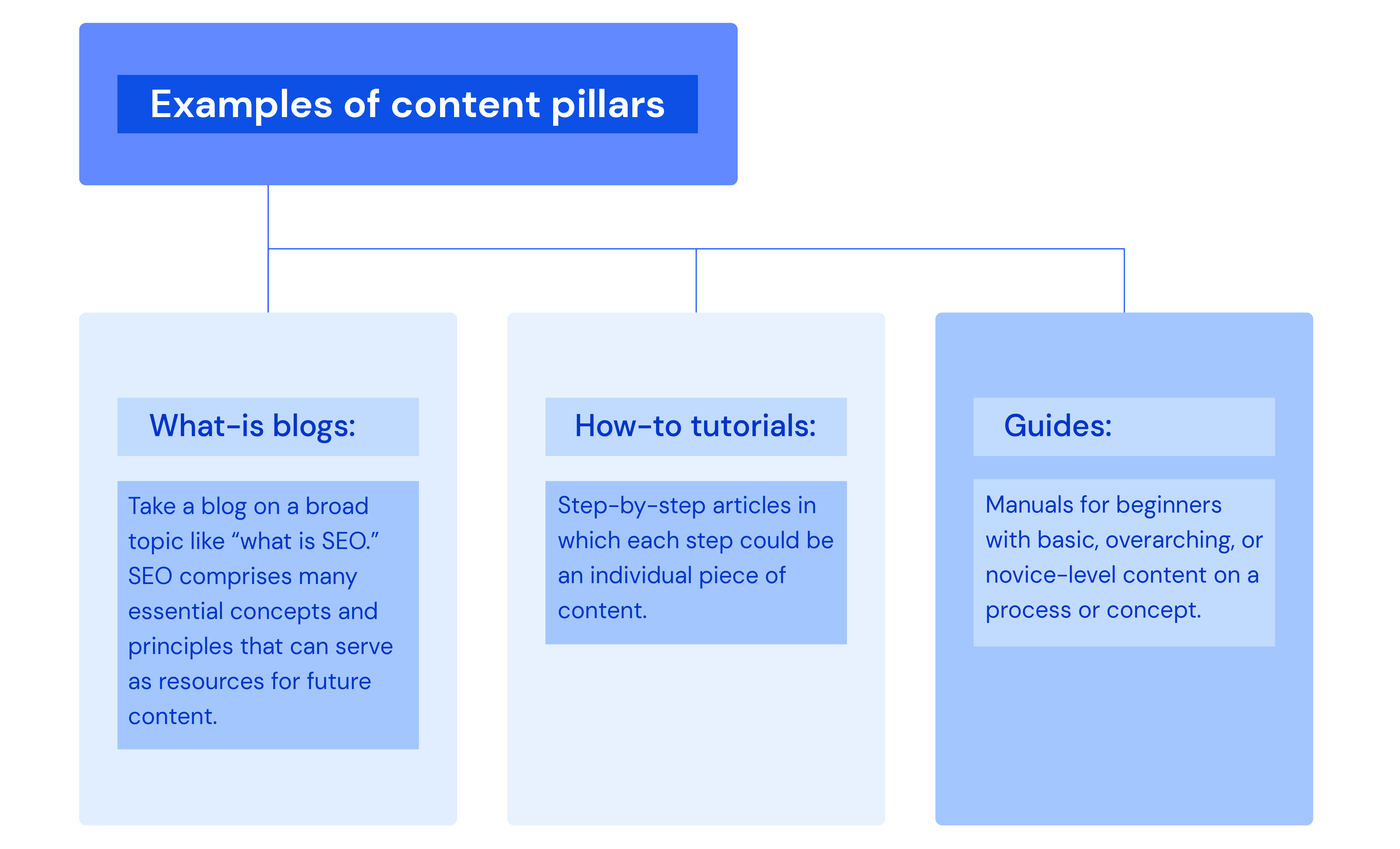Uniform blog/A complete guide to content pillars
A complete guide to content pillars
A complete guide to content pillars
The term content pillars, ubiquitous throughout the journey of strategizing content marketing, refers to in-depth data that addresses complex concepts within your industry—data you can break down into smaller “micro concepts” for future use.
Below is a deep dive into content pillars and the way in which to create the content that stems from them.
What are content pillars?
As content with more substance and depth than traditional content, content pillars can stand alone. However, you can also disseminate the subject matter within pillars into supporting pieces that cover the key concepts.
A pillar strategy fits nicely into overall content modeling for two reasons:
- Production folks can position the pillars as a focal point of their content model and create pieces that stem from each of the pillars.
- Teams can easily spot and analyze the relationships among content pieces and identify opportunities for repurposing or optimization. Breaking down content pillars into components yields a framework full of scalable content that furthers sustainability and efficiency.
What are some examples of content pillars?
Pillars can accommodate various content formats, such as social media and ebooks. You can repurpose text snippets and infographics in ebooks across other platforms. Besides, with the repurposed pieces, you can drive traffic to ebooks or some other type of lead magnet to capture contact information of site visitors.

Three other content-pillar strategies are also popular:
- What-is blogs, which define topics in detail. Important themes within the blog could then become subtopics or chapters. Take a blog on a broad topic like “what is SEO.” SEO comprises many essential concepts and principles that can serve as resources for future content.
- How-to tutorials, which are step-by-step articles in which each step could be an individual piece of content. For example, each item in the table of contents of a how-to pillar blog could become a chapter or independent blog.
- Guides, which are manuals for beginners, i.e., X 101 or Y 101, with basic, overarching, or novice-level content on a process or concept. For a complex topic like foreclosure, the pillar page could be an overview, followed by details of the legal process, the timeline for your credit to recover, etc.
How do content pillars lead to efficiency?
Content models are a visual representation—a map or schema—of all the content in your digital presence and the relationships of the content pieces. Within the models are—
- Content types, also called micro content, which are the larger framework or format of your content, e.g., a blog or YouTube video. Content pillars would be your content type—the larger entity that holds the subsequent pieces or chapters.
- Content attributes, also called macro content, are larger content types’ smaller components, such as subordinate concepts or chapters.
Visually mapping content pieces and their relationships with a content model makes for an efficient content strategy. Also, a clear view of all those pieces and their relationships leads to ease in spotting opportunities for recycling existing content, shoring up your production team’s ROI on campaigns with minimal effort or resources. For example, you could easily edit a long-format video that serves as your pillar into shorter clips for redistribution to Instagram Reels, TikTok, and YouTube Shorts.
As effective as composable content models are, savvy businesses are turning to all-in-one digital experience composition platforms (DXCPs) for more smooth structuring and content reuse. With those platforms, you can publish experiences from any source to any channel and even preview how the content will look on the channels, drastically reducing editing time and eliminating frustrations that result from resizing and reformatting chores.
How do I create content pillars?
Follow the steps below to create effective, sustainable, and scalable content pillars.
1. Identify a pillar topic.
Choose a compelling and relevant pillar topic, which must be key to the subject matter in question, and factor in SEO performance. Additionally, pick a topic that encompasses keywords with a strong search volume. Delve deeply into the topic to create the additional content that makes pillars useful. Also, substantiate the topic so that it can act as a hub for future content while ensuring that it pertains to your target audience.
Say, you’re a copywriter with an assignment to do a pillar piece on email marketing. Your hub page could be a synopsis of email marketing, its process, and the reasons for its importance. You can drill down to describe the different types of emails and suggest ways on how to write eye-catching subject lines, etc.
2. Brainstorm the derivative content.
Huddle with your team for fresh, original ideas for additional content. Earlier in this article is an example of a YouTube video. If that video is your pillar, what content types could you weave in?
- You could break up the video into segments for social platforms.
- You could repurpose the video into a blog.
- You could screenshot text from the blog and convert the result into traditional social posts.
- You could give the posts flair with a platform like Canva or copy and paste them for a text-only platform like Twitter.
Above all, remember that the additional content ideas must support your pillar.
3. Audit the existing content.
As a best practice, keep your content architecture simple and slick with the appropriate tools. Even with no content model, you can still audit your content.
Start with scanning your content across all channels to find out—
- If you could adopt part of it for a new topic.
- If your content already addresses the topic and needs a deeper or different perspective.
All in all, content audits help you avoid creating redundancies, let alone capitalize on recycling or repurposing opportunities.
4. Build the content.
Consult your content model for stakeholders for the production process. Also, do you need graphics? How about video editing? Think of workflows that can take your model to the finish line: Assembling the “puzzle pieces” before production begins often leads to a smooth go.
How do I streamline the production process?
Leveraging content pillars is not rocket science, but nonetheless a challenging task that requires hard work. As you keep adding pillars and as your content evolves, your content model might become complex.
DXCPs and orchestration tools significantly simplify the production process by enabling assembly and reuse outside of the underlying content model. To learn the benefits of Uniform DXCP, start with scheduling a free demo. Once you see what Uniform can do to raise your team’s productivity and facilitate cross-channel content creation, you’ll never look back
Experts recommend between three to six content pillars.







.jpg&w=1080&q=90)
.jpg&w=1080&q=90)